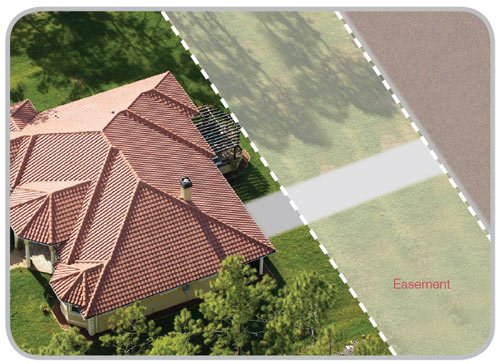Case law update: express easement vs. prescriptive easement
Posted Wednesday, September 6, 2017 by Christopher L. Thayer
In Schoenfelder, et al v. Larson (No. 48885-0-II), the Court of Appeals Division II recently addressed a situation involving several neighbors and a private roadway. A group of neighbors used a private road for access to their properties. Although the neighbors all purchased their lots at different times, the evidence presented demonstrated that the private road had been in use since at least the 1960s. The Larsons purchased their lot in 2015.
The road runs through the Larsons’ property before reaching the Neighbors’ properties. The road is “approximately 10 feet wide, with curvy turns and in excess of 700 feet long.” It begins at Kopachuck Drive and runs west, cutting through two parcels of the Larsons’ property. For years, many vehicles travelled the road, including vehicles driven by family members, guests, delivery and service persons, and emergency service vehicles.
The neighbors’ property are benefited by and the Larsons’ property burdened by an express easement agreement, which was recorded in 1996. The easement grants ingress and egress over and across the road from Kopachuck Drive to the benefitted properties. It grants “non-exclusive surface easement for ingress and egress on five (5) feet on each side of the center line across the existing black topped road” that crosses the parties’ respective properties. The road is not wide enough for two vehicles to pass and therefore the neighbors often use certain “turn out” areas to make way for oncoming traffic – these turnouts are all located on the Larsons’ property and are all beyond the scope of the existing express easement (10 feet wide).
After a 4-day bench trial, the trial court ruled the neighbors had a prescriptive easement over the areas burdened by the “turn outs” and also blocked the Larson’s from constructing a fence within 2.5 feet of the recorded express easement location. This was in recognition that fire trucks and other commercial vehicles could barely fit on the 10 foot wide express easement.
Prescriptive easement. The Court of Appeals needed to address whether the express easement had been modified by the parties’ conduct, creating an additional “prescriptive” easement.
To establish a prescriptive easement, the person claiming the easement must use another person's land for a period of 10 years and show that (1) he or she used the land in an ‘open’ and ‘notorious’ manner, (2) the use was ‘continuous’ or ‘uninterrupted,’ (3) the use occurred over ‘a uniform route,’ (4) the use was ‘adverse’ to the landowner, and (5) the use occurred ‘with the knowledge of such owner at a time when he was able in law to assert and enforce his rights.’
Gamboa v. Clark, 183 Wn.2d 38, 43, 348 P.3d 1214 (2015).
‘Adverse’ use generally means that the land was used without the landowner’s permission. “For a claimant to show that land use is ‘adverse and hostile to the rights of the owner’ in this context, the claimant must put forth evidence that he or she interfered with the owner's use of the land in some manner.” Gamboa, 183 Wn.2d at 52. If a use is permissive, then no prescriptive easement will be found. What is known as “neighborly accommodation” often defeats a prescriptive easement claim – where the evidence suggests use of another’s property was permissive by implication as a gesture of good faith to a neighbor. Larsons argued permissive use in this case, but the Court of Appeals found the use of the turnouts was “adverse” based in part on the fact that prior owners of the Larson property had place rocks along the express easement (which blocked the turn outs) and the neighbors had removed these rocks (to allow continued access to the turn outs).
Whether or not a property owner has acquired property rights, including easement rights, by usage over time (prescriptive easements or adverse possession), is frequently a very fact-based inquiry. Schoenfelder is instructive in that it shows the length to which a Court will go to find “adverse” use, even in the face of claims the use was permissive and a neighborly accommodation. This is an “unpublished” case, meaning it has no precedential value.
If you have questions relating to an easement or property boundary line dispute, please contact managing partner Chris Thayer at (206) 805-1494 or CThayer@PivotalLawGroup.com.

(Internet image - author and date unknown)